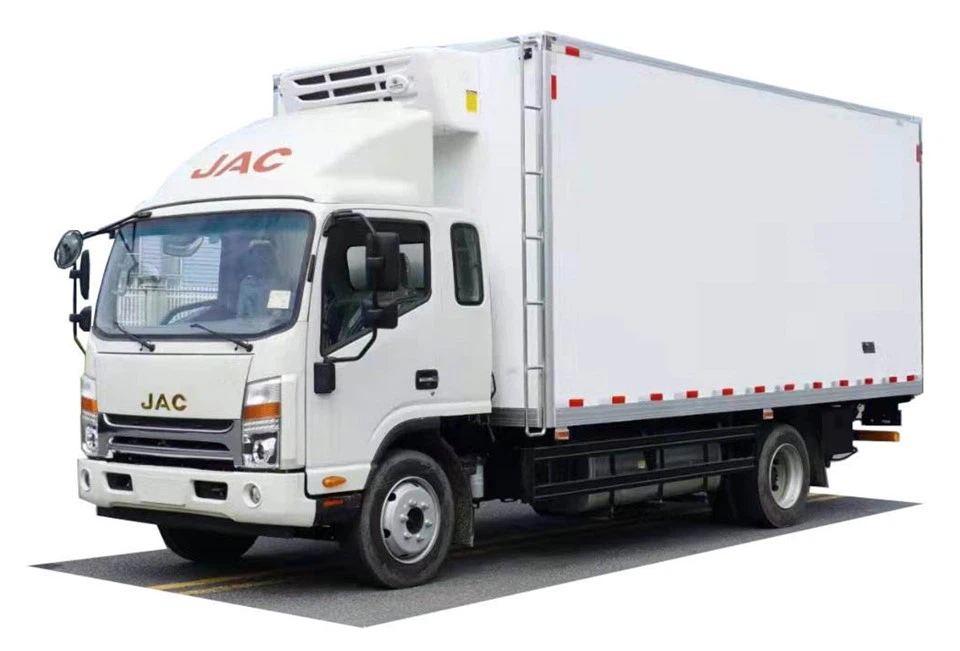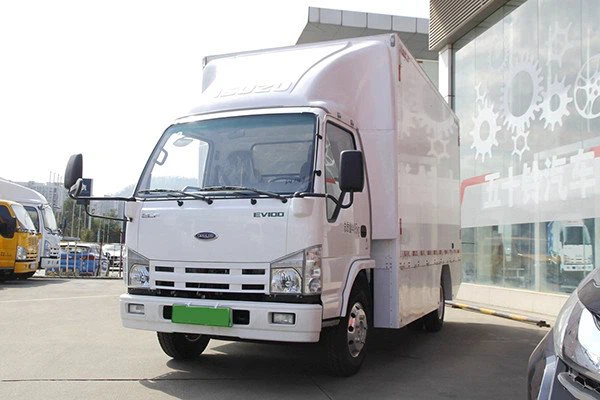Understanding Streetsweeper Vehicles: The Ultimate Guide

Introduction
Streetsweeper vehicles are vital for maintaining clean and orderly urban environments. These specialized vehicles are equipped to efficiently remove debris, dust, and refuse from roads and streets, enhancing both aesthetics and public health. Whether you’re a city planner, a sanitation worker, or just a curious resident, understanding the functions, types, benefits, and operational mechanisms of streetsweepers can be immensely valuable. This article will explore every aspect of streetsweeper vehicles, including their technology, best practices for use, and maintenance tips. Dive in to discover how these machines contribute to our communities.
What is a Streetsweeper Vehicle?
A streetsweeper vehicle is a specialized machine used to clean roads and public spaces. They are equipped with brushes, vacuums, and sometimes water systems to collect litter, leaves, dirt, and other debris. Streetsweepers can be classified based on size, technology, and application. Their primary goal is to improve cleanliness and hygiene in urban areas.
History of Streetsweeper Vehicles
The first mechanical street cleaning device was invented in 1843. These early machines were horse-drawn and rudimentary compared to today’s high-tech models. As cities grew and urbanization increased, the need for effective street cleaning became paramount, leading to innovations in design and functionality.
Types of Streetsweeper Vehicles
Streetsweepers come in various shapes and sizes, designed to meet the differing needs of municipalities. Here are some common types:
1. Mechanical Broom Sweepers
These are the most traditional and widely used type of streetsweeper. They use rotating brushes to push debris into a hopper for collection. They are suitable for most urban environments and can operate on various surfaces.
2. Vacuum Sweepers
Utilizing suction power, vacuum sweepers are highly effective for collecting fine dust and small debris. They often feature filtration systems to minimize dust re-entrainment and can be equipped with water sprays to control dust further.
3. Regenerative Air Sweepers
These sophisticated sweepers use a combination of air jets and vacuum power. They blow air onto the surfaces to dislodge debris, which is then sucked into the hopper. Regenerative air sweepers are efficient and minimize water usage.
4. Compact Sweepers
Compact sweepers are smaller vehicles designed for tight spaces, such as parking lots and pedestrian areas. They offer versatility and are typically easier to maneuver in congested urban environments.
5. Electric Sweepers
With growing concerns about environmental impact, electric sweepers are becoming popular. They operate quietly with zero emissions but may have limitations in terms of operating duration and power compared to their diesel counterparts.
Benefits of Using Streetsweeper Vehicles
Investing in streetsweeper vehicles provides numerous advantages for cities and towns:
1. Improved Public Health
Regular street cleaning helps to prevent the buildup of litter and pollutants that can harm health. It reduces the risk of diseases spread by pests and improves air quality.
2. Enhanced Aesthetics
Clean streets contribute to the overall appearance of a community, attracting visitors and potential residents. A tidy environment can uplift local businesses and enhance property values.
3. Environmental Benefits
By collecting trash and reducing debris, streetsweepers play a crucial role in protecting waterways from pollution. They help keep storm drains clear, thereby minimizing flooding during heavy rains.
4. Cost Efficiency
Though the initial investment may be significant, regular maintenance and operation of streetsweepers can lead to long-term savings by reducing the need for more substantial repairs and environmental clean-ups.
5. Convenience
Modern streetsweepers are equipped with advanced technology, making them easier to operate. Many models offer GPS tracking and automated controls, enhancing operational efficiency.
Key Features of Modern Streetsweeper Vehicles
Today’s streetsweepers are equipped with advanced features designed to enhance their efficiency and effectiveness:
1. GPS Navigation Systems
GPS technology allows operators to optimize routes, track their progress, and ensure thorough cleaning of all designated areas.
2. Advanced Filtration Systems
Newer models use high-efficiency particulate air (HEPA) filters that capture fine dust particles, making them particularly suited for urban environments where air quality is a concern.
3. Water Spray Systems
Water systems are employed to keep dust levels down and enhance cleaning capabilities, especially during dry seasons.
4. Operator Comfort Features
Modern streetsweepers often boast ergonomic seats, climate control, and improved visibility features, providing greater comfort and safety for operators during long working hours.
Safety Features
Many streetsweepers come with alarms, lights, and cameras to improve visibility and awareness, ensuring the safety of both operators and pedestrians.
Operational Best Practices for Streetsweeper Vehicles
To maximize the effectiveness of streetsweeters, operators should adhere to specific best practices:
1. Schedule Regular Operations
Create a strict cleaning schedule to ensure that areas are not missed. Frequent cleaning helps manage debris accumulation effectively.
2. Monitor Weather Conditions
Adjust the cleaning schedule based on seasonality and weather forecasts. Wet weather may change cleaning strategies, while dry conditions could lead to more dust.
3. Train Operators
Provide comprehensive training for all operators, including equipment handling, maintenance checks, and safety protocols. Properly trained staff can operate equipment more efficiently and avoid costly errors.
4. Routine Maintenance
Conduct regular checks on cleaning machinery. Ensure brushes are in good condition, water systems are functional, and filters are replaced when necessary.
5. Utilize Real-time Data
Implement systems that utilize real-time data to track street cleanliness and efficiency. This data can inform operational changes and highlight areas that may need additional attention.
Maintenance Tips for Streetsweeper Vehicles
Proper maintenance is crucial for ensuring the longevity and optimal performance of streetsweepers:
1. Daily Inspections
Before operation, inspect the vehicle for any issues. Check the fluid levels, brake systems, and cleaning components.
2. Regular Cleaning of Brushes
After each use, clean the brushes to avoid debris buildup and prolong their life. Fabricated screens should also be checked for blockages.
3. Fluid Top-ups
Regularly check and top up necessary fluids, including oil, hydraulic fluid, and coolant, to ensure peak performance during operation.
4. Scheduled Professional Maintenance
Engage with professionals for scheduled maintenance checks. Regular servicing can prevent unexpected breakdowns and repairs, reducing downtime.
5. Keep Spare Parts On Hand
Maintain an inventory of essential spare parts, such as filters, hoses, and belts, to quickly address any maintenance needs that arise.

Examples of Streetsweeper Vehicle Brands
| Brand | Model | Type | Key Features |
|---|---|---|---|
| Elgin | Pelican | Mechanical Broom | Versatile, powerful vacuum system |
| Schmidt | Sweeper | Regenerative Air | Efficient dust control, ergonomic design |
| Ausa | F1 | Compact | Compact design, easy to maneuver |
| Nilfisk | SW2000 | Electric | Zero emissions, quiet operation |
Environmental Considerations for Streetsweeper Vehicles
With increasing focus on environmental sustainability, streetsweeper vehicles play a pivotal role in promoting cleaner urban areas:
1. Dust Control Measures
Regular street sweeping prevents dust from rising into the air, thus improving air quality in heavily trafficked cities. Utilizing water systems also helps keep fine dust particles down.
2. Waste Collection
Effective waste collection minimizes litter in urban areas, reducing the environmental impact on natural habitats and wildlife.
3. Fuel Efficiency

Opting for energy-efficient models, including electric sweepers, helps lessen carbon footprints and supports sustainability goals in urban management.
4. Community Engagement

Encourage community participation in keeping streets clean. Educating residents about the importance of clean surroundings can lead to reduced litter and greater community pride.
Frequently Asked Questions (FAQ)
1. How often should streetsweepers clean urban roads?
The frequency of cleaning depends on several factors, including traffic volume, weather conditions, and budget. Generally, a bi-weekly to monthly schedule is recommended for busy urban streets.
2. Can streetsweepers operate in all weather conditions?
Yes, though effective operations may vary. For instance, during heavy rain or snow, streetsweepers may be less effective. Temperature extremes can also affect the machinery’s capabilities.
3. How much does a streetsweeper vehicle cost?
The cost of streetsweeper vehicles can range significantly based on type and features. Typical models range between $150,000 to $300,000, while high-end or specialized units may exceed this range.
4. Are electric streetsweepers worth the investment?
While electric streetsweepers may have a higher upfront cost, they save money over time through reduced fuel expenses and less maintenance. Their environmental impact also contributes to sustainability goals.
5. What are the main components of a streetsweeper?
The main components include brushes, vacuum systems, water tanks, and waste hoppers. Advanced models may also feature GPS systems and digital controls for enhanced operation.
6. How can I promote better street cleanliness in my community?
Advocate for regular street cleaning, participate in community clean-up days, and educate residents on the importance of not littering. Active civic engagement can significantly improve community cleanliness.
